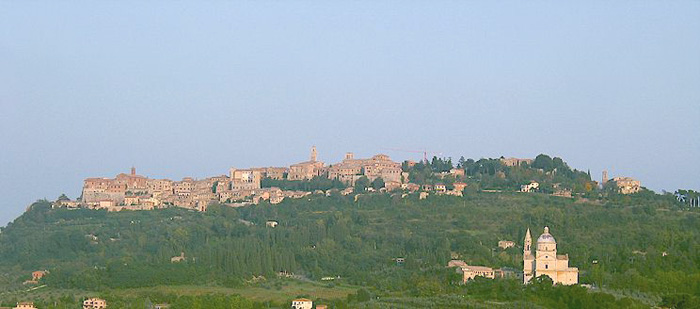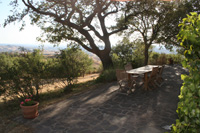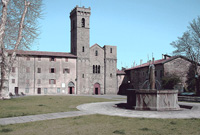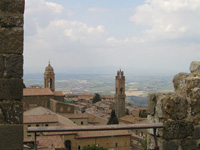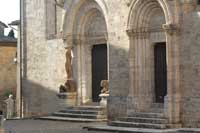Walking in Tuscany | Walking From Montepulciano to Montefollonico |
Montepulciano is perched on a hill and the entire town slopes at a steep gradient culminating in the magnificent Piazza Grande which houses the Communal Palace and the main cathedral. The town offers many interesting medieval and Renaissance churches, and buildings to explore along with narrow side streets and alleyways that take you to magnificent viewpoints of the surrounding countryside.
|
Sanctuary of the Madonna di San Biagio
|
||||
 |
||||
The unusual Basilica di San Biagio built by Sangallo in the XVI century [Photo, Josep Renalias]
|
||||
| Through the Vines to the Oratory of Sant’Anna |
||||
| Loop around the church and walk around it down the country road to get to the trail. When you reach the trail sign you take a left on a dirt road – which is the "white road" shown on the map of the region. You follow this dirt road through vineyards and farms with beautiful vistas on your left and right. You will be able to see Montefollonico perched on a hilltop for almost the entire hike. After quite a bit of walking, you will pass over two dried stream beds (one of which is describes as a stream in Walking and Eating in Tuscany-it may be a seasonal stream). After the second streambed, you will see a dirt road going up a hill to the right. You follow this dirt road straight up the hill. It will seem like this is taking you slightly out of the way when you look at the village but it is the correct way. You will come to an old chapel near the top of the hill and there will be another trail sign for folks who are going in the opposite direction. You take a left on the raod by the chapel and stay on it, ignoring diversions as it curves up the hill. After some climbing, you will pass the great restaurant La Chiusa on the left. The road will turn right--follow it straight away through small residential area and you will come upon the old portal to the walled town ahead and to the right. |
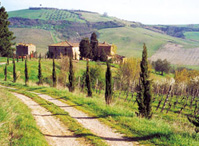 Podere Acerone placed between Montefollonico and Montepulciano Podere Acerone placed between Montefollonico and Montepulciano |
|||
Far from busy roads and from the usual tourist trail, the splendid isolation of Montefollonico is probably what makes it particularly charming and appealing. Located between the Val d’Orcia and the Val di Chiana valleys, southeast of Siena, the town holds very ancient origins. |
|
|||
The estate lies between Montepulciano and Montefollonico and consists of about 32 hectares of which 12 ar specialized vineyards, situated between 330 and 350 metres above sea level on medium-textured clay soils of pliocene origin.
|
||||
The convent of Santa Maria de Folonico, better known as Conventaccio, belonged to the Benedictine monks, probably linked to the monastery of Abbaddia San Salvatore which since the 11th century had properties in the area. The abbey building had a considerable size. There are remains of the crypt and the nave of the church with Gothic arches. From the "Conventaccio", a path leads to the Pieve di S. Valentino (parish church of St. Valentine).
|
||||
|
|
||||
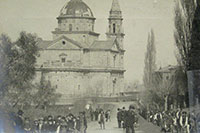 |
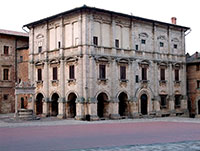 |
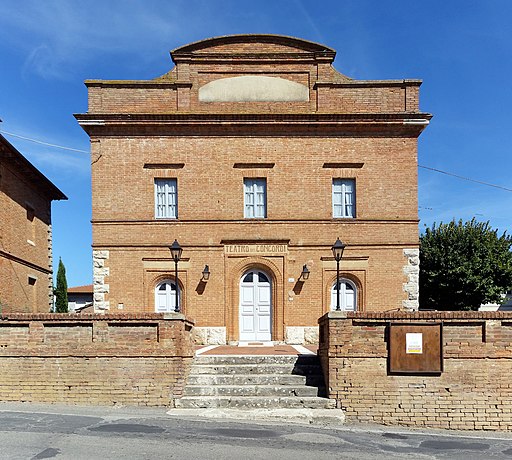 |
||
San Biagio, Montepulciano, foto storica
|
Palazzo Nobili-Tarugi, Montepulciano
|
Teatro della Società dei Concordi | ||
| Chiesa di San Biagio |
|
|||
 |
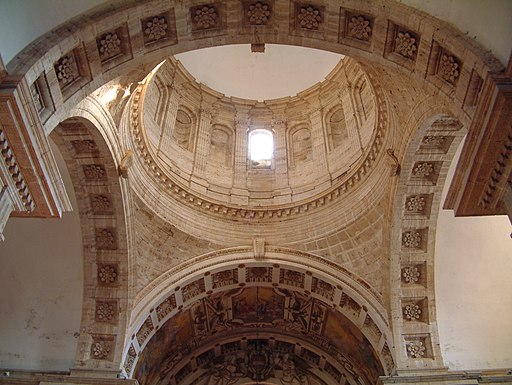 |
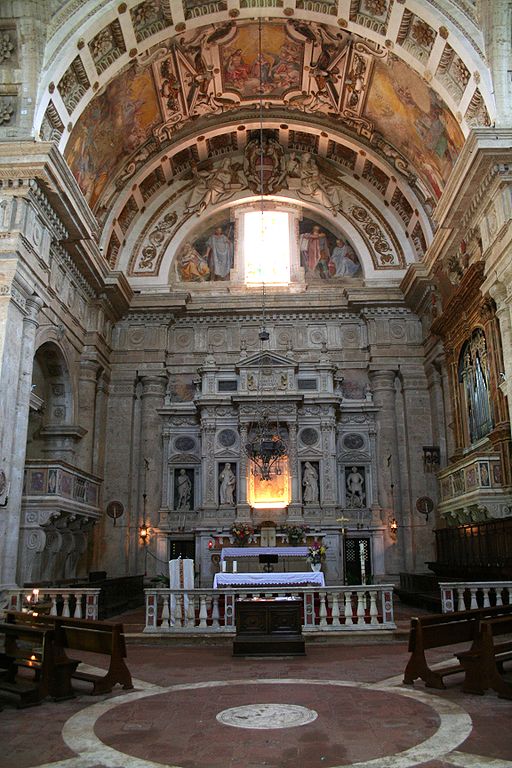 |
||
San Biagio, esterno
|
San Biagio, cupola
|
Chiesa di San Biagio, interno | ||
|
||||
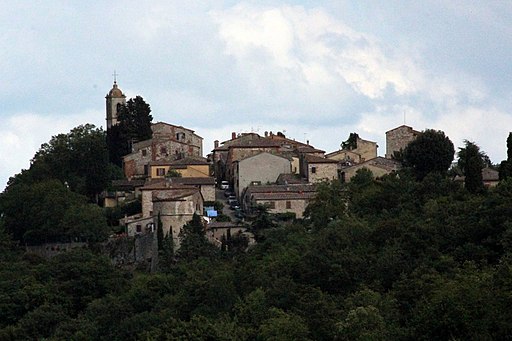 |
 |
 |
||
Montefollonico
|
|
Montefollonico, Porta del Triano | ||
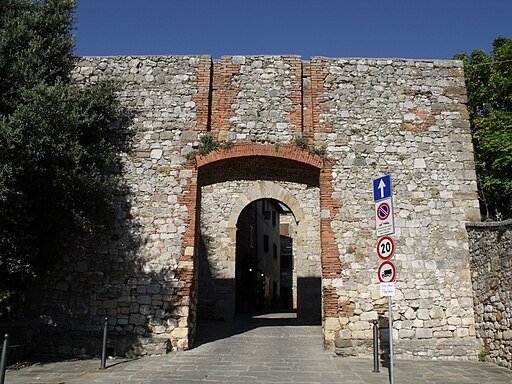 |
 |
 |
||
| Montefollonico, Porta Nuova | Ruderi del monastero di Santa Maria, Montefollonico. Particolare del portale che si apre sul muro perimetrale (visto dall'interno).
|
Ruderi del monastero di Santa Maria, Montefollonico. Vista da sud-est | ||
|
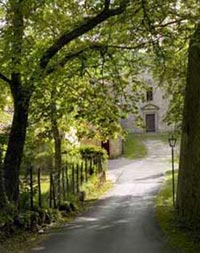 Borgo dell'Eremo and Chiesa di San Marcello |
|||
|
||||
|
||||
Podere Santa Pia |
Podere Santa Pia |
Abbadia San Salvatore |
||
Pienza |
Montalcino
|
San Quirico d'Orcia |
||
|
||||
 |
||||
Podere Santa Pia, view from the terrace. To the south is the little isle of Montecristo (on the left), the name of which captured the imagination of Alexandre Dumas. On a clear day you can even see Corsic (on the right), 250 km away
|
||||
| Sources: Walking From Montepulciano to Montefollonico; ETC | Walking_From_Montepulciano_to_Montefollonico_ETC-Montepulciano_Tuscany.html |
||||

